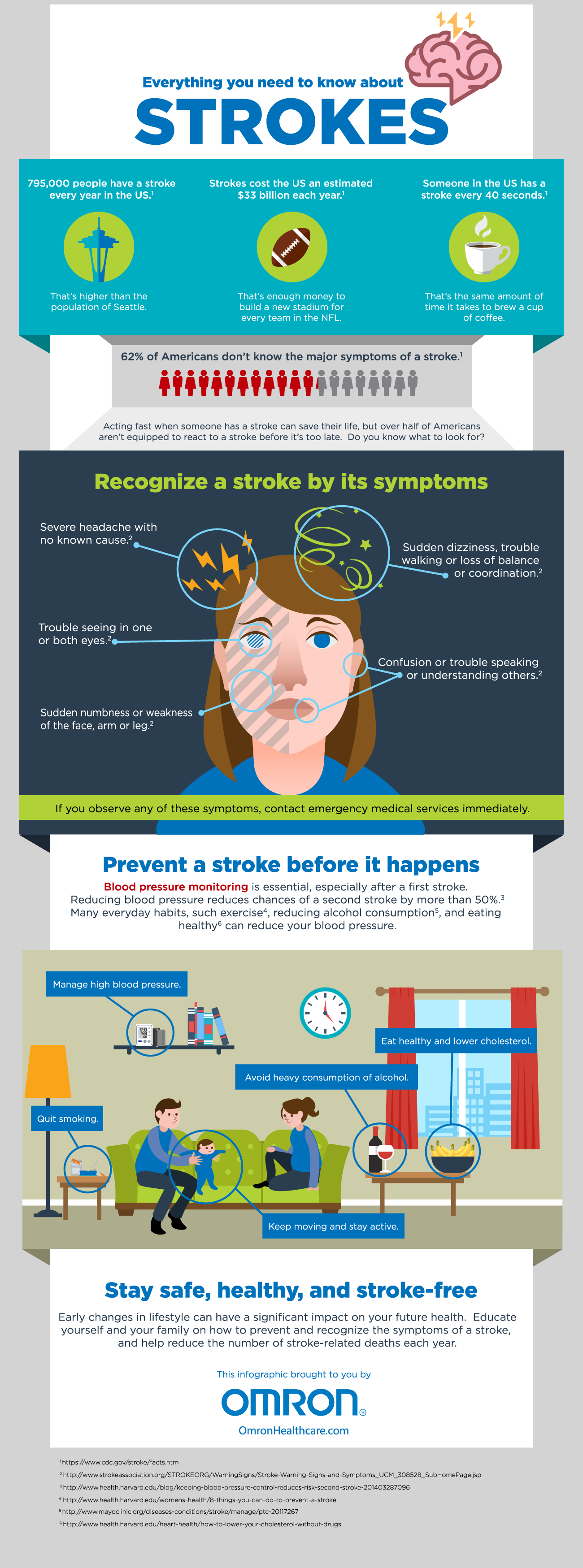Imagine being stuck in an elevator with 50 people. (True, that’s a large elevator).
Sadly, around twelve of these people will suffer a stroke in their lifetimes. That’s a lot; but in spite of that, less than half of the people in the elevator will recognize the most important signs of stroke and how to respond. These are known by the acronym FAST: FACE drooping, ARM weakness, SPEECH difficulty, and TIME to call 911.
Those are just some of the signs, and knowing all of them is a crucial short-term step. The longer term goal—imagining a world without strokes—takes awareness of the full scope of the problem and knowledge of prevention steps.

What causes strokes?
High blood pressure is the #1 cause of stroke. High blood pressure forces blood cells to move too quickly and erratically through vessels leading to the brain, damaging the linings and causing blockages that lead to a burst. The bleeding that results inside of the brain is a stroke, and it can kill those parts of the brain affected by it. Smoking also damages blood vessels, as can extra fluid in your bloodstream resulting from too much sodium.
High cholesterol, high sodium intake, poor diet, and physical inactivity also put you at risk. What few of us know is that other chronic health issues like Diabetes, Atrial Fibrillation, and Sickle Cell Anemia are also risk factors for stroke.
Take a look at these 12 common causes of stroke. What should stand out is just how many of them can be prevented or managed by lifestyle, including diets low in sodium and LDL cholesterol, quitting smoking, and getting at least 30 minutes of exercise a day.
Toward a world without strokes
The frequency of occurrences and the sheer number of preventable causes make it clear: stroke is a shared problem. Changing our lifestyles as Americans starts with ourselves, followed by our families and our friends.
If you’re interested in taking stroke awareness to the next level, there’s no need to hand out literature in a crowded elevator. Supporting the American Heart Association, becoming an advocate, and taking the pledge to join Generation Zero are all great places to start.